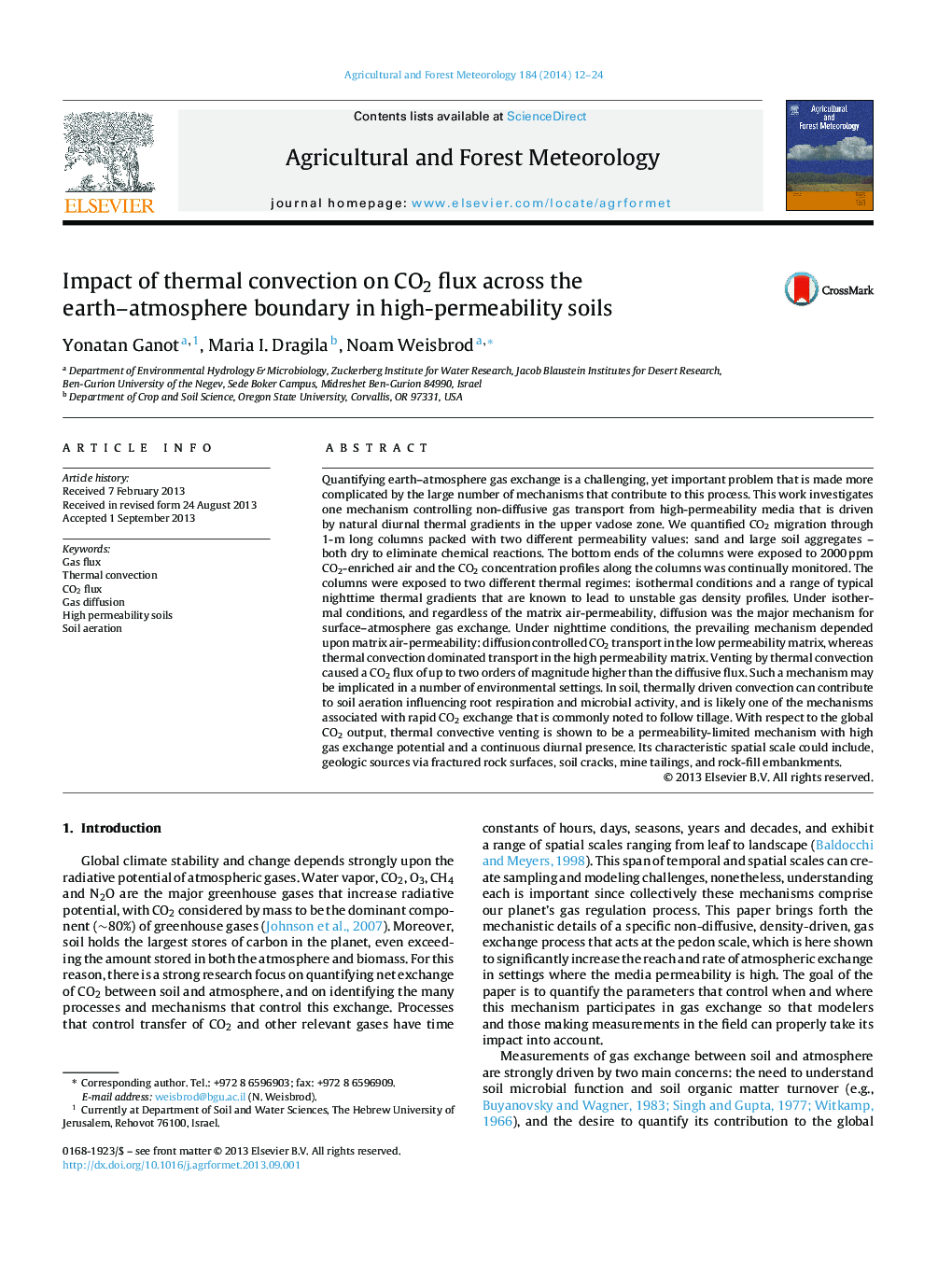| کد مقاله | کد نشریه | سال انتشار | مقاله انگلیسی | نسخه تمام متن |
|---|---|---|---|---|
| 6537677 | 158347 | 2014 | 13 صفحه PDF | دانلود رایگان |
عنوان انگلیسی مقاله ISI
Impact of thermal convection on CO2 flux across the earth-atmosphere boundary in high-permeability soils
دانلود مقاله + سفارش ترجمه
دانلود مقاله ISI انگلیسی
رایگان برای ایرانیان
کلمات کلیدی
موضوعات مرتبط
مهندسی و علوم پایه
علوم زمین و سیارات
علم هواشناسی
پیش نمایش صفحه اول مقاله

چکیده انگلیسی
Quantifying earth-atmosphere gas exchange is a challenging, yet important problem that is made more complicated by the large number of mechanisms that contribute to this process. This work investigates one mechanism controlling non-diffusive gas transport from high-permeability media that is driven by natural diurnal thermal gradients in the upper vadose zone. We quantified CO2 migration through 1-m long columns packed with two different permeability values: sand and large soil aggregates - both dry to eliminate chemical reactions. The bottom ends of the columns were exposed to 2000Â ppm CO2-enriched air and the CO2 concentration profiles along the columns was continually monitored. The columns were exposed to two different thermal regimes: isothermal conditions and a range of typical nighttime thermal gradients that are known to lead to unstable gas density profiles. Under isothermal conditions, and regardless of the matrix air-permeability, diffusion was the major mechanism for surface-atmosphere gas exchange. Under nighttime conditions, the prevailing mechanism depended upon matrix air-permeability: diffusion controlled CO2 transport in the low permeability matrix, whereas thermal convection dominated transport in the high permeability matrix. Venting by thermal convection caused a CO2 flux of up to two orders of magnitude higher than the diffusive flux. Such a mechanism may be implicated in a number of environmental settings. In soil, thermally driven convection can contribute to soil aeration influencing root respiration and microbial activity, and is likely one of the mechanisms associated with rapid CO2 exchange that is commonly noted to follow tillage. With respect to the global CO2 output, thermal convective venting is shown to be a permeability-limited mechanism with high gas exchange potential and a continuous diurnal presence. Its characteristic spatial scale could include, geologic sources via fractured rock surfaces, soil cracks, mine tailings, and rock-fill embankments.
ناشر
Database: Elsevier - ScienceDirect (ساینس دایرکت)
Journal: Agricultural and Forest Meteorology - Volume 184, 15 January 2014, Pages 12-24
Journal: Agricultural and Forest Meteorology - Volume 184, 15 January 2014, Pages 12-24
نویسندگان
Yonatan Ganot, Maria I. Dragila, Noam Weisbrod,